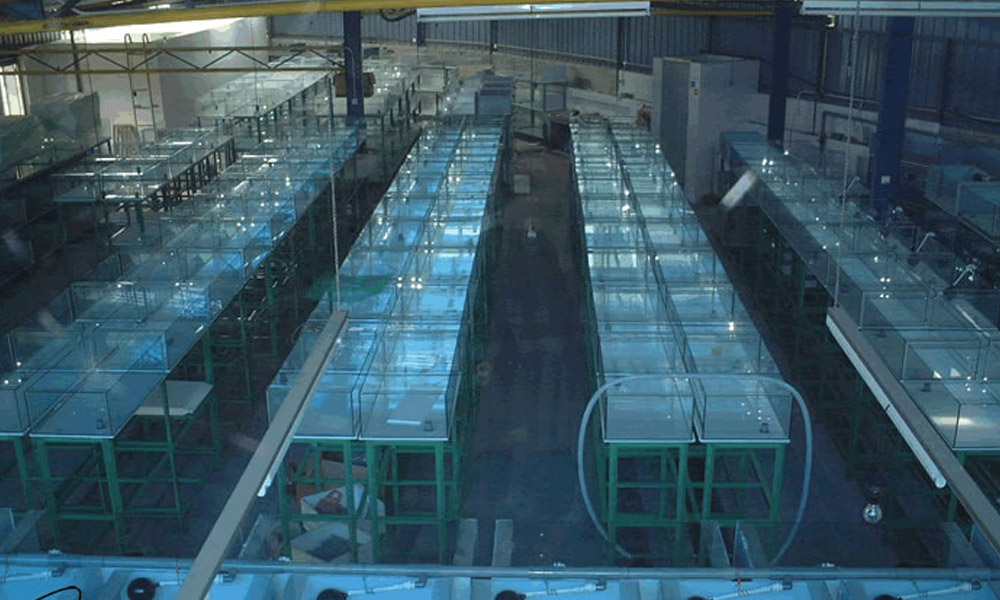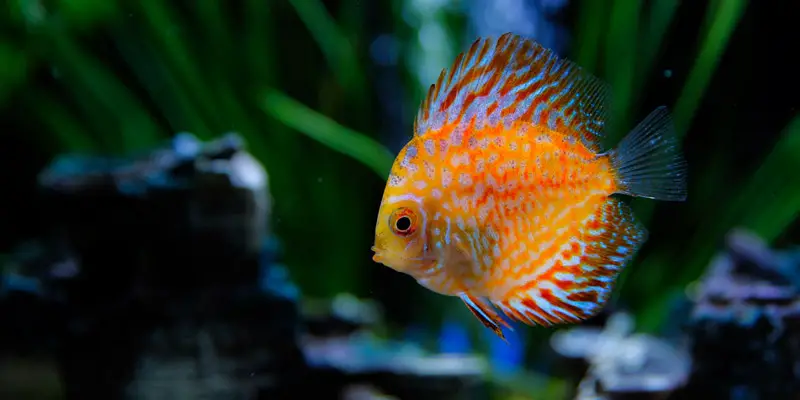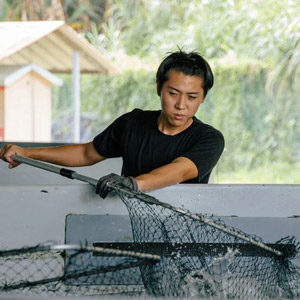Discus fish (Symphysodon spp.), the King of the aquarium, are known for their striking beauty and royal colors. Despite their unique appearance, discus fish keep many fish keepers out of the hobby due to several shortcomings, and the most notable among them is their hefty price tag.
The average hybrid discus fish price can range from $30 to $150, while wild-caught discus fish is usually between $150 and $300. A breeding pair of discus fish can cost $300 to $1000. The price will depend on the strain, size, coloration, patterning, and body shape.
You see, discus fish are not your boring, run-of-the-mill community fish, they are not cheap! If you’re thinking about getting discus fish, be prepared to shell out some serious cash.
This article will explain why discus fish is so expensive, and we will also list the most expensive discus fish strain in the world.
Enjoy!
Why Are Discus Fish So Expensive?
Discus fish are relatively expensive compared to other aquarium fish available in the market, especially these wild specimens. There are several reasons why discus fish are expensive.
They Prefer Warmer Waters
Wild discus fish come from lentic lakes and rivers in the lowland Amazon basin, where the average water temperature is about 86° F, although wild Heckel discus (S. discus) live in habitats with water temperatures of up to 90° F.
In our facilities, we usually set the water temperature to about 86-87° F. This is because discus fish grow faster and show off better colors at this heat. To maintain these temperatures, we need larger heaters than other tropical fish. Of course, the electricity bill will go up and this will add to the discus fish price.
For those discus fish keepers in cooler climates, you will definitely need a water heater – this is a big cost.
They Are Late Bloomers
Although discus has a long lifespan for tropical fish (10 to 15 years in captivity), they are late bloomers and don’t show their potential colors and patterns until they are about 2 – 3 years old.
Assuming you bought healthy and non-stunted younger (2″ – 2.5″), on average, they will reach the 6″ size range within 10-12 months when well cared for.
For commercial farms, growing discus from fry to adult involves a lot of time. This is really true for obtaining quality specimens as we have to weed out the fish that do not meet our standards along the way. During this culling process, time and money have been translated into cost, which will eventually be transferred to the discus fish price.
The higher quality strain with better coloration will, of course, cost more.
They Are More Difficult to Care For
Discus fish are notorious for being difficult to keep. They have very strict water requirements, and their food is relatively expensive.
Most people suggest using reverse osmosis (RO) water, but it will actually depend on the water conditions your fish have used before reaching your tank. Wild discus fish are acclimated to very soft and slightly acidic water. Using a reverse osmosis filter to provide pristine water conditions is the best way to go.
While captive-bred discus might have already adapted to harder water, depending on the area. For example, European-bred strains are more tolerant of harder water and can do well in general tropical fish tanks.
As far as I’m aware, fishing farms in Asia, including Malaysia, Singapore, Vietnam, and China, discus are raised in soft and acidic water. Professional breeders Mr. Tony and Mr. Jeffrey Tan [1] also suggested using soft water for discus tanks.
Another thing to consider is their diet. The best discus foods will have higher protein content and contain ingredients like blackworms, beef hearts, and shrimp. No matter you go with commercial beef heart flakes or making your homemade food, both come with a cost.
They Are a Shoaling Species
Discus fish are schooling fish by nature and thrive when kept in groups of their own kind. In the wild, discus fish are found swimming in schools of many dozens of individuals. As with most large South American cichlids, discus will become aggressive and territorial with each other if they are not kept in a decent-sized group.
Generally, I would recommend growing a group of at least 10 juveniles at the same time. This will allow them to form a natural hierarchy [2], with the strongest discus becoming the “leader” of the group. The rest of the fish will naturally fall into place in the social order, which will help keep aggression to a minimum.
While a single juvenile might set you back $50, a group of 10 discus will cost you $500 initially. Of course, more in the long run as they need to be fed properly and their tank maintained.
Discus Brands
There are many discus breeding brands in the trade, and the discus price will differ from one breeder to another. It depends on who bred the strains, quality, and availability. Discus enthusiasts are willing to pay higher prices for a favorite brand. As a result, driving demand gives the brand the ability to drive the price up, making it one of the most expensive fish in the hobby.
It’s a Labor-intensive Work

As previously hinted, raising discus is a time-consuming and labor-intensive process simply because this fish takes a long time to reach maturity compared to other fish.
For commercial discus farms, they not only take care of fry to adults but also have to breed.
Breeding fish in a farm is a totally different ball game, let alone discus fish, which require more care, pristine water conditions, and stable temperatures. This is a costly process as it involves a lot of workforces to sort through all the discus fish.
With that being said, all of these factors will add up to the discus fish price tag. So, the next time you see a discus fish for sale at your local fish store or online, remember all the work that goes into getting that discus from fry to full size!
Most Rare and Expensive Discus Fish
Now, we’ve known the discus fish price range and some of the factors that affect their pricing. Let’s take a look at some of the rare discus strains that command high prices.
Wild Royal Cuipeua Discus ($250.00 – $300.00)
The Wild Royal Cuipeua discus is one of the most sought-after discus fish due to its unique coloration and electric blue stripes. The most interesting thing about this strain is that its stripes can change color from different angles, making it even more visually appealing.
Wild Red Ica Discus ($250.00 – $300.00)
Looking at the Red Ica Discus, it’s not hard to see why this discus fish is one of the most popular discus strains. Their vivid sunset coloration and graceful behavior make it an instant hit with discus hobbyists around the world.
Wild Jacarecappa Wild Discus ($250.00 – $300.00)
Similar to the Wild Red Ica Discus, the Jacarecappa discus also sports shining blue striations against a bright body in a mix of red, orange, and yellow, but the striations are absent in the back area. This discus fish is quite rare in the wild and only found in very specific areas.
Albino Platinum (Rabbit Eye) Discus ($100.00 – $200.00)
Also known as the Rabbit Eye Discus, the Albino Platinum Discus develop an opal white body and fins with a faint undertone of pink. The main attraction of this strain is its unique red eyes [3] and white base that resembles that of a rabbit.
Albino Pearl Diamond Discus ($100.00 – $200.00)
Light up your South American aquariums with the shimmering Albino Pearl Diamond discus fish! This fish is mostly butter yellow in coloration with translucent fins. A soft orange hue along the body and fins, plus the scarlet albino eyes, adds an exotic look to your discus tank.
Red Eagle Discus ($100.00 – $250.00)
The beauty of Red Eagle Discus opens up a discus world of colors that will take your breath away. This strain has been used to develop the Red Pigeon Blood Discus, a less expansive and plain variation. Aesthetically, both strains are very pleasing to the eyes.
Altum Flora Discus ($80.00 – $200.00)
An astonishing mixing pattern of brown rounded squiggles cover the upper and lower strikingly green body, and the middle area tends to be dark. Their fins are somewhat outlined with a tinge of brown coloration.
“Giant Blue” Turquoise Discus ($350.00 – $550.00)
This giant discus displays a majestic electric blue coloration along the body, where the fins are companies with blood red lines. These lines fade in at the turquoise base, making this fish a true visual delight.
Crimson Star Alenquer Discus ($200.00 – $300.00)
We have the most colors in the spectrum, but what about crimson red with stars? The Crimson Star Alenquer discus is one of the most popular discus fish due to its crimson coloration.
Striated Cuipeua Cross Discus($200.00 – $300.00)
Unlike its wild counterparts, the Striated Cuipeua discus shows a more subdued coloration with a thick dashed line horizontally running through the upper portions of its body. The eye-catching metallic green color on its head and fins makes this discus visually stunning.
So there you have it, a discus fish price list of some of the most popular and expensive discus strains in the world. Please note the price ranges are only estimates and may vary depending on the supply and demand.
Generally speaking, newer or harder-to-breed strains are rarer than others and thus more expensive. Moreover, the trends change every now and then, so stay updated on the discus world is important.
Final Words
If you’re looking to add one of these amazing discus fish to your collection, be sure to do your research and find a reputable discus breeder or dealer.
You can buy discus fish online or from local breeders. For those who never kept discus fish before, as with any fish, stay away from the extremes in price – leave the very expensive discus fish to the experienced hobbyists and don’t buy these cheap ones that are often sickly and won’t thrive.
Discus fish are delicate creatures and require a well-maintained aquarium with the right water parameters, diet, and care. They are not recommended for beginners. Do your homework before making a purchase and be prepared to provide your discus fish with the best possible care. Thanks for reading!
Article Sources:
- Mr. Tony & Mr. Jeffrey Tan [Link]
- Parental care and the development of the parent offspring conflict in discus fish [Link]
- Discus: The whole truth and nothing but [Link]





